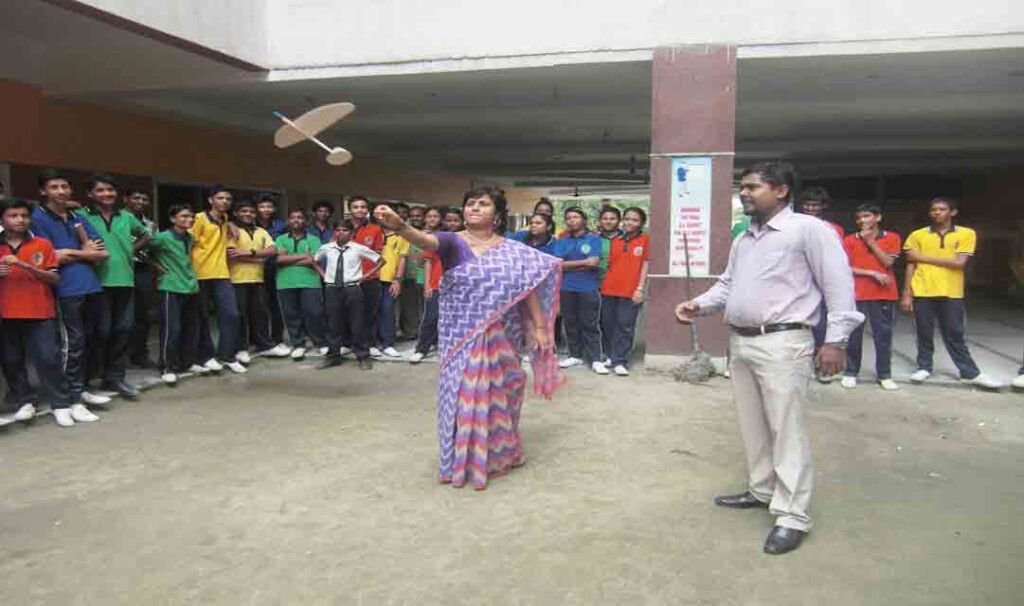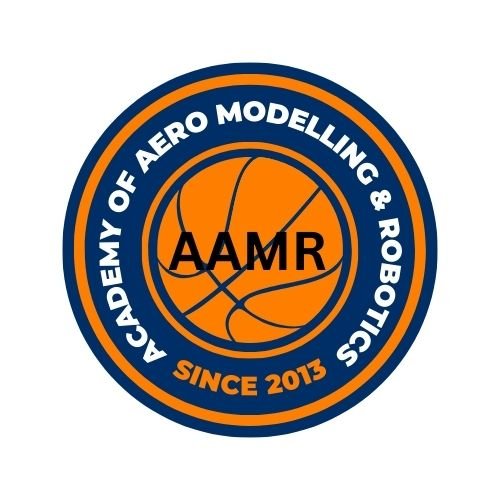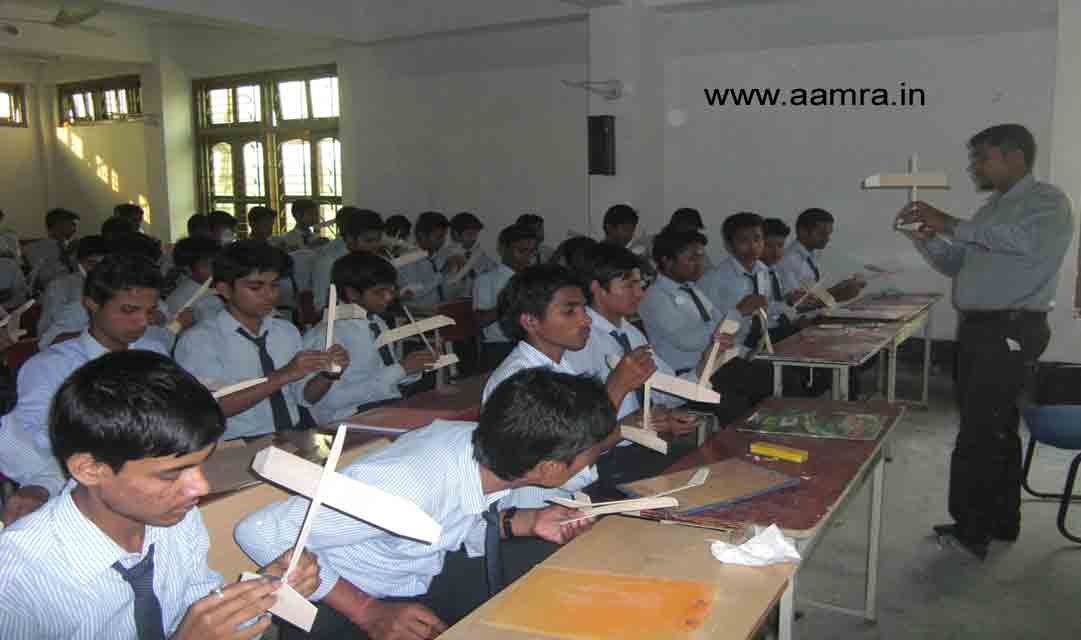In a world where educational pursuits extend beyond traditional textbooks, the captivating realm of aeromodelling emerges as a dynamic pathway to fostering essential life skills in students.
Beyond the intricate models and soaring flights, aeromodelling serves as a catalyst for cognitive, motor, and interpersonal proficiencies that equip young minds for a future defined by innovation and collaboration.
This article embarks on a journey through the multifaceted landscape of aeromodelling, revealing how it propels students towards a realm of limitless potential.
The Intriguing World of Aeromodelling
The evolution of aeromodelling mirrors the aspirations of human ingenuity, tracing back to Leonardo da Vinci’s visionary sketches and encompassing modern marvels like remote-controlled drones. Within this captivating world, various types of aero models offer diverse avenues for exploration.
Where fixed-wing models emulate conventional airplanes while rotary-wing models encompass helicopters and quadcopters. At the crossroads of science and creativity, aeromodelling stands as a playground where students engineer flight, breathing life into their designs and embracing the exhilarating challenge of aerodynamics.
Building Cognitive Proficiency
Since Aeromodelling serves as a realm where cognitive skills flourish. Problem-solving takes flight as students meticulously analyze flight dynamics and surmount design obstacles. Critical thinking comes to the forefront as they unravel the intricacies of aerodynamics and optimize control mechanisms for optimal performance.
Again, Attention to detail becomes a guiding principle, etching precision into every construction process and fine-tuning each element for impeccable results.
Enhancing Motor Skills
However, the delicate dance of fine motor skills comes alive in the hands of student aviators. The art of handling intricate components and assembling complex structures refines their dexterity. Hand-eye coordination ascends to new heights as they maneuver remote controls with finesse, ensuring graceful flights and pinpoint accuracy.
On the other hand, Spatial awareness, a cornerstone of flight navigation, blossoms as students masterfully visualize three-dimensional space, an invaluable skill reverberating across various real-world scenarios.
Fostering Teamwork and Communication
The sky becomes a canvas for collaborative endeavors as students engage in group projects. Design and construction morph into a symphony of teamwork, where each member’s contribution shapes the final masterpiece. Knowledge becomes a currency as tips, techniques, and problem-solving strategies are shared and exchanged, nurturing a culture of mutual growth.
Identically, effective communication threads through every phase, from articulating flight plans to providing constructive feedback, honing skills vital for successful collaboration in any endeavor.
Cultivating Patience and Time Management
Again, Aeromodelling imparts a profound lesson in patience and time management. The intricacies of planning and execution come to light as students chart construction timelines and devise flight schedules. Each setback and challenge becomes a canvas for learning, as the iterative design process unveils the power of adaptation and perseverance.
In the meantime, patience takes wing during flights, teaching students to await ideal conditions and witness their skills gradually unfurl, an invaluable virtue in a fast-paced world.
Unlocking Creative Expression
However, the artistry of aeromodelling extends beyond mechanics, offering a platform for creative expression. Customization and design empower students to infuse their models with personalized aesthetics, reflecting their individuality. Innovative experimentation becomes a hallmark of their journey, as they push the boundaries of design, testing modifications that redefine the limits of flight performance.
Nurturing Resilience and Confidence

Similarly, Aeromodelling nurtures resilience by transforming challenges into stepping stones. Each setback becomes an opportunity for growth, instilling a spirit of perseverance in the face of adversity.
As students conquer challenges, their confidence gets a boost. Achievements in flying and acknowledgment from friends and mentors further strengthen their self-assurance.
Practical Benefits Beyond the Hobby
Uniquely, the skills cultivated in the world of aeromodelling extend their wings far beyond the hobby. Students discover that their newfound abilities possess real-world relevance, seamlessly transferring to academic pursuits and future career paths.
Moreover, aeromodelling offers a sanctuary of leisure and relaxation, a realm where stress dissipates amidst the hum of engines and the exhilaration of flight, fostering bonds with like-minded enthusiasts.
Success Stories: Students and Aeromodelling
Numerous success stories underscore the profound impact of aeromodelling on students’ holistic development. Triumphs in national competitions and groundbreaking design innovations stand as testimonies to the fusion of dedication and skill.
Students share stories of how aeromodelling has changed them for the better. Their experiences have turned them into strong, confident, and creative individuals who are ready to face any challenge that comes their way, even beyond the skies.
Read More: The Thrilling 5-Day Hobby Camp Journey! Embarking On Aeromodelling!
Conclusion
In conclusion, Aeromodelling emerges as a gateway to life skills growth, inviting students on a voyage of self-discovery and empowerment. Amidst the intricacies of flight and design, a tapestry of cognitive proficiency, motor finesse, teamwork, patience, creativity, resilience, and confidence weaves itself, enriching students’ lives with invaluable proficiencies.
As educators and learners alike embrace the realm of aeromodelling, they embrace a future where soaring potential propels students to limitless horizons, both in the skies and in their personal growth.
Read More: What is Aeromodelling? Does It Empower Student Life Skills?
Frequently Asked Questions
What is aeromodelling, and how does it contribute to life skills development in students?
Aeromodelling is the art of designing, constructing, and flying miniature aircraft models, and it serves as a powerful platform for nurturing life skills in students. As they engage in this hands-on activity, they develop essential cognitive, motor, and interpersonal competencies that extend beyond traditional classroom learning. For instance, as students analyze flight dynamics and optimize control mechanisms, they sharpen their problem-solving skills, which can prove invaluable when tackling complex challenges in various domains.
How does aeromodelling enhance cognitive proficiency in students?
Aeromodelling enhances cognitive proficiency by encouraging students to tackle intricate challenges related to flight dynamics, aerodynamics, and design. As they grapple with these complexities, they refine their analytical thinking and strategic problem-solving abilities. For example, determining the optimal balance between lift and thrust to ensure smooth flight requires critical evaluation and decision-making, honing their cognitive acumen.
What motor skills are honed through the practice of aeromodelling?
The practice of aeromodelling hones motor skills through delicate component handling and precise construction techniques. For instance, assembling tiny components, such as control surfaces and landing gear, demands fine motor control, fostering dexterity and precision in students’ movements.
How does aeromodelling foster teamwork and communication among students?
Aeromodelling fosters teamwork and communication as students engage in collaborative projects. Constructing and flying models require effective communication to coordinate tasks and share insights. For example, during a group flight session, clear communication is crucial to ensure safe and coordinated maneuvers, promoting teamwork and a sense of shared achievement.
Can you explain the role of patience and time management in aeromodelling’s impact on life skills?
Patience and time management are cultivated through aeromodelling’s iterative design process and the waiting game for ideal flight conditions. Students learn to plan and execute tasks meticulously, ensuring each component is assembled with care. This patience is vital, especially during flight tests, where waiting for the right weather conditions for optimal flight can instill a sense of time management and patience.
In what ways does aeromodelling allow for creative expression in students?
Aeromodelling’s canvas of creative expression allows students to personalize their models, infusing them with artistic flair and unique design elements. For instance, customizing the paint scheme, applying decals, and experimenting with different materials showcase students’ creativity and innovative thinking.
How does overcoming challenges in aeromodelling nurture resilience and confidence?
Overcoming challenges in aeromodelling nurtures resilience and confidence. When students encounter setbacks, such as a model crash, they learn to analyze the situation, identify the cause, and adapt their approach. Successfully overcoming such obstacles enhances their confidence and teaches them to remain determined in the face of adversity.
What practical benefits beyond the hobby does aeromodelling offer for students?
Beyond the hobby, aeromodelling offers practical benefits by preparing students for real-world applications. The skills acquired, such as problem-solving, critical thinking, and teamwork, find relevance in academic pursuits and future careers. For instance, the precision required in assembling and flying models translates into meticulous attention to detail, which is essential in fields like engineering and design.
How does aeromodelling prepare students for real-world applications?
Aeromodelling’s impact on problem-solving skills is profound. Students face various challenges, such as optimizing flight performance and troubleshooting mechanical issues. Each problem presents an opportunity for them to analyze, experiment, and devise solutions, cultivating their ability to navigate complex issues and devise effective strategies.
What impact does aeromodelling have on students’ problem-solving skills?
Critical thinking is developed through the multifaceted nature of aeromodelling. Students are tasked with understanding the interplay of aerodynamics, weight distribution, and control mechanisms to ensure stable flight. By critically evaluating these factors and making informed decisions, they sharpen their ability to analyze complex systems and make well-reasoned judgments.
Can you provide examples of how critical thinking is developed through aeromodelling?
Aeromodelling contributes to the enhancement of fine motor skills through the delicate manipulation of small components. For example, attaching miniature servos, adjusting control surfaces, and securing fasteners require precise movements, refining students’ dexterity and control.
How does aeromodelling contribute to the enhancement of fine motor skills?
Hand-eye coordination is integral to aeromodelling’s impact on students. Maneuvering remote controls during flight demands synchronizing visual inputs with motor responses. This heightened coordination is evident in their ability to execute precise flight maneuvers, showcasing the synergy between their visual and motor skills.
What role does hand-eye coordination play in aeromodelling’s impact on students?
Aeromodelling nurtures spatial awareness by immersing students in a three-dimensional realm. Visualizing flight trajectories, understanding the impact of control inputs, and predicting model behavior contribute to a heightened spatial understanding. This skill extends beyond the workshop, aiding students in tasks that require spatial orientation and visualization.
How does aeromodelling help in nurturing spatial awareness among students?
Collaborative aspects of aeromodelling contribute to teamwork by involving students in group projects. Coordinating tasks, sharing expertise, and working together on model construction and flight activities instill a sense of collaboration. By collaborating effectively, students learn the art of division of labor and leveraging diverse skills to achieve common goals.
What are the collaborative aspects of aeromodelling that contribute to teamwork?
Effective communication is promoted in aeromodelling as students interact with peers during group projects and flights. Clear communication of flight plans, instructions, and feedback is essential to ensure safe and coordinated operations. Through these interactions, students refine their ability to convey information clearly and concisely.
How does aeromodelling promote effective communication skills in students?
The iterative design process in aeromodelling relates to patience as students refine their models through multiple iterations. Designing, building, testing, and refining models demands patience to achieve optimal performance. This process teaches students the value of persistence and the rewards of gradually improving their work over time.
Can you explain how the iterative design process in aeromodelling relates to patience?
The customization and design aspects of aeromodelling encourage creative thinking by allowing students to experiment with unique modifications. They may alter wing shapes, adjust control surfaces, or explore novel materials, fostering innovative approaches to problem-solving and design enhancement.
How does the customization and design aspect of aeromodelling encourage creative thinking?
Inspiring success stories of students benefiting from aeromodelling abound. From winning national competitions with innovative designs to using skills acquired in aeromodelling for academic and professional achievements, these stories highlight the profound impact of this hobby on students’ personal growth and future prospects.
What are some inspiring success stories of students benefiting from aeromodelling?
Educators can integrate aeromodelling into curricula to maximize life skills growth by designing hands-on projects and workshops. For example, incorporating aeromodelling concepts into STEM subjects allows students to apply theoretical knowledge in practical scenarios, fostering a deeper understanding and skill development.
How can educators integrate aeromodelling into curricula to maximize life skills growth?
Well, the integration of aeromodelling into curricula can be achieved through interdisciplinary approaches. For instance, aerodynamic principles can be tied to physics lessons, while material science concepts can be explored through model construction.
By seamlessly weaving aeromodelling into various subjects, educators can offer students a holistic learning experience that nurtures life skills growth.

